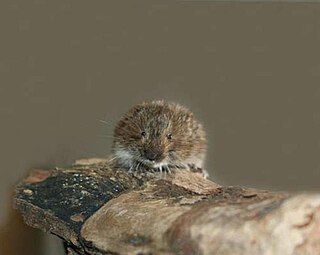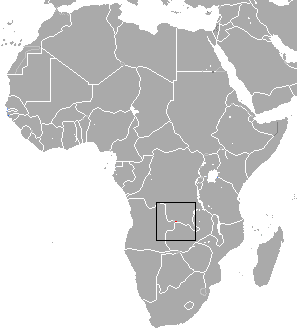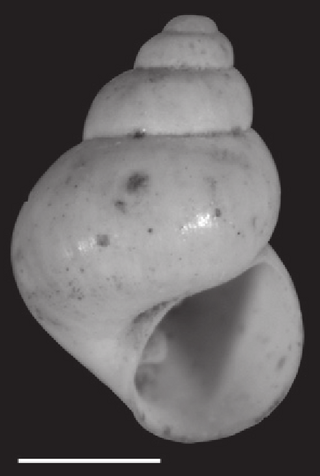
The macaques constitute a genus (Macaca) of gregarious Old World monkeys of the subfamily Cercopithecinae. The 23 species of macaques inhabit ranges throughout Asia, North Africa, and Europe. Macaques are principally frugivorous, although their diet also includes seeds, leaves, flowers, and tree bark. Some species such as the long-tailed macaque will supplement their diets with small amounts of meat from shellfish, insects, and small mammals. On average, a southern pig-tailed macaque in Malaysia eats about 70 large rats each year. All macaque social groups are arranged around dominant matriarchs.

The conservation status of a group of organisms indicates whether the group still exists and how likely the group is to become extinct in the near future. Many factors are taken into account when assessing conservation status: not simply the number of individuals remaining, but the overall increase or decrease in the population over time, breeding success rates, and known threats. Various systems of conservation status are in use at international, multi-country, national and local levels, as well as for consumer use such as sustainable seafood advisory lists and certification. The two international systems are by the International Union for Conservation of Nature (IUCN) and The Convention on International Trade in Endangered Species of Wild Fauna and Flora (CITES).

An IUCN Red List Critically Endangered species is one that has been categorized by the International Union for Conservation of Nature as facing an extremely high risk of extinction in the wild. As of 2021, of the 120,372 species currently tracked by the IUCN, there are 8,404 species that are considered to be Critically Endangered.

The Tatra pine vole, also called the Tatra vole or Tatra ground vole, is a species of vole endemic to the Carpathian mountain range in Slovakia, Poland, Ukraine and Romania. Two subspecies have been recognised. M. t. tatricus occupies the western part of the range in Slovakia and Poland, and M. t. zykovi is found in Ukraine and Romania.

The Hainan partridge is a species of bird in the family Phasianidae. It is endemic to Hainan Island, China. Its natural habitats are primary evergreen forests. It is threatened by habitat loss and has been assessed as a vulnerable species.

Day's shrew is a species of mammal in the family Soricidae. It is endemic to India. Its natural habitat is subtropical or tropical dry forests. It is threatened by habitat loss.

The Sakeji horseshoe bat is a species of bat in the family Rhinolophidae. It is endemic to Zambia. Its natural habitats are subtropical and tropical dry and moist lowland forest, and moist savanna. It is threatened by habitat loss. It was discovered in 2000.
The slender campeloma, scientific name Campeloma decampi, is a species of freshwater snail with an operculum, an aquatic gastropod mollusk in the family Viviparidae.
Cincinnatia is a genus of very small freshwater snails that have an operculum, aquatic gastropod molluscs in the family Hydrobiidae, the mud snails.
Marstonia castor, common name the beaver pond marstonia, is a species of very small freshwater snail with a gill and an operculum, an aquatic operculate gastropod mollusc in the family Hydrobiidae. This species was endemic to a very limited area of the US state of Georgia, mostly to streams and creeks around Lake Blackshear.
Marstonia ogmorhaphe, common names the royal marstonia or royal springsnail, is a minute species of freshwater snail, an aquatic gastropod mollusk or micromollusk in the family Hydrobiidae, the mud snails. This species is endemic to Tennessee in the United States, where it occurs in two streams in Marion County. It is a federally listed endangered species of the United States.
Marstonia olivacea, common name the olive marstonia, was a species of very small freshwater snail, an aquatic gastropod mollusk in the family Hydrobiidae. This species was endemic to Alabama, the United States. Its natural habitat was rivers. This species is now extinct.
Marstonia ozarkensis, common name the Ozark pyrg, is a species of very small or minute freshwater snails with an operculum, aquatic gastropod molluscs in the family Hydrobiidae. This species was endemic to Missouri and Arkansas in the United States and was presumed extinct by the U.S. Fish and Wildlife Service as of December 2018.
The armored marstonia, scientific name Marstonia pachyta, also known as Pyrgulopsis pachyta, is a species of freshwater snail, an aquatic gastropod mollusc in the family Hydrobiidae.
The angular pebblesnail, scientific name Somatogyrus biangulatus, is a species of very small freshwater snail with an operculum, an aquatic operculate gastropod mollusc in the Lithoglyphidae family. This species is endemic to Alabama in the United States. Its natural habitat is Muscle Shoals region of the Tennessee River. Although the IUCN officially categorises the species as Data Deficient, it also considers it as Possibly extinct, as it has not been recorded since the river was impounded. This latter classification is also supported by The Nature Conservancy.

A vulnerable species is a species which has been categorized by the International Union for Conservation of Nature as being threatened with extinction unless the circumstances that are threatening its survival and reproduction improve.

Marstonia comalensis is a species of minute freshwater snail with a gill and an operculum, an aquatic gastropod mollusk or micromollusk in the family Hydrobiidae. It is found in south central Texas, United States.







